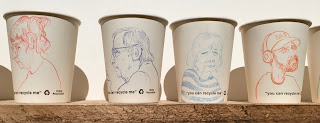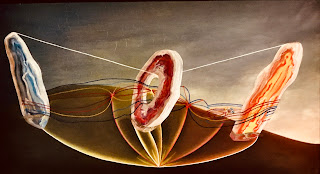Liberty Valance and Trump
I was watching ‘The man who shot Liberty Valance’ it’s from 1962, directed by John Ford.
It’s a good film with three archetypal male figures. John Wayne plays a strong silent type, good at fighting and shooting, and on the side of behaving well, passionate about a woman and desolate and angry but honourable when he loses her to James Stewart’s complex, educated more peaceful good man, not above helping out in the kitchen, who is brave and wins the love of the good and beautiful woman - Vera Miles. The third sort of man is Lee Marvin’s villainous violent criminal who bullies and ultimately fails.
I must have seen hundreds of westerns as I grew up. The heroes were always riding off into the sunset, uncommitted to any woman, strong, silent and good.
They were not helpful models for a young woman longing to form a loving equal relationship with a man but they were good looking and wouldn’t hit a woman.
For a boy they endorsed bravery, self containment, honour and violence towards bad men if necessary. However they were definitely respectful of women and believers in justice.
There is a lot of talk now about boys growing up with no good role models, influenced by misogynist thugs, insecure about their gender, unheroic, lacking empathy and unable to make loving relationships.. Trump is the epitome of this cultural phenomenon, strangely admired by a third of American voters - they’d have voted for Liberty Valance and would have sought to be protected by being his supporters, losing all self respect and honour.
And yet there aren’t any films that promote this bullying attitude are there?
There are online talks that do. Internet availability provides a private access to the sort of men society as a whole largely fears and dislikes. Covid encouraged isolation from others.
There are few youth clubs in uk since the Tories demolished the youth service, which gave role models with whom young people met and talked, men who could be helpful to a growing teenager, especially those with absent fathers. Also they provided education about the traps and dangers of unknown lying people seeking power, especially online.
Young women via feminism are less subservient, more confident and less available. Men have to be careful about women’s rights and yet they see in some Muslim countries extremist misogyny triumphing. Bad men are recruiting followers.
People say that young people can’t concentrate on a whole film anyway or maybe not on a whole novel.
What’s to be done to promote the values most of us still want?
On tv everything becomes a competition, winners and losers - even bodies are on show for contestants to select, young farmers compete to get tenancy of national trust farms, antiques and houses are bought cheap and sold dear. Only the repair shop does kindly patient acts not for profit but milks our sympathy with endless tear-jerking stories. Watercolour painting has to be judged with prizes. Cooking is highly competitive whether for bargain ingredients or at the level of master chefs.
At least no one can escape cooking knowledge one would think, and there used to be many programs showing education in childcare to manage bad behaviour in toddlers.
There’s nil political or economic education on tv- no examination in any depth of how different countries are organised, of views like Marxism or modern monetary theory.
A lot of bread and circuses- food and competitions although thankfully not the Roman proliferation of death and cruelty - that’s left for war zones in distant countries.
Then there’s pornography - people objectified, sex without love. How did we go from a society with little knowledge of sex especially for women before marriage, to one so desensitised and careless of feelings? Decadence accompanying the end of a civilisation.
And yet swing and roundabout wise we are more careful not to be racist and sexist in language.
You can be gay or change your gender in uk
Do young men, alonside young women, need to be civilised via a counter culture of decency, equality, non violence and maturity? Who is going to do it? Could the school curriculum cover it?
Instead of endless fruitless battles over the details of uniform, could we have an emphasis on cooperation and helpfulness?
The personal is political and cruelty is fascist. Workers of the world unite, men and women organising together. We saw with the popularity of Jeremy Corbyn that there is a thirst for goodness, idealism, we see with protests about Gaza and climate change - maybe now even closer to home protests about benefit cuts, it’s not over, it’s not all lost and hope insists on action as the antidote to despair.






































